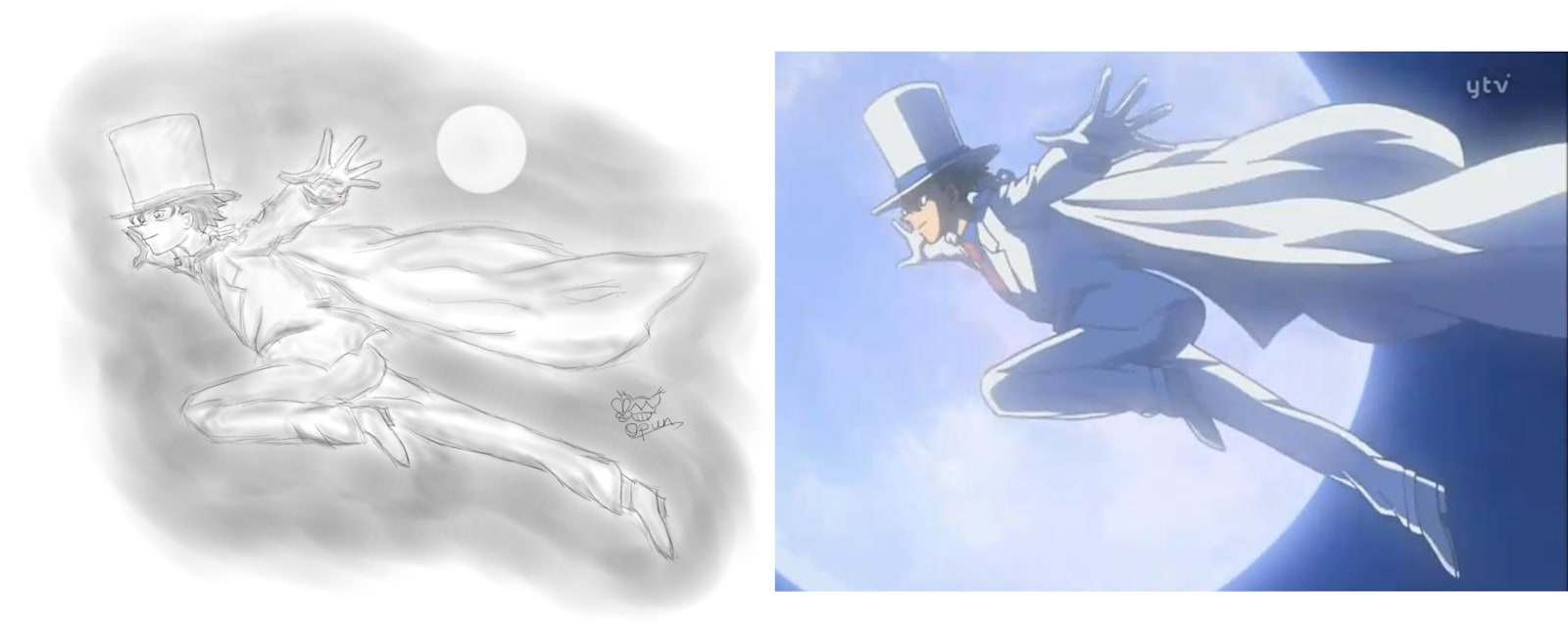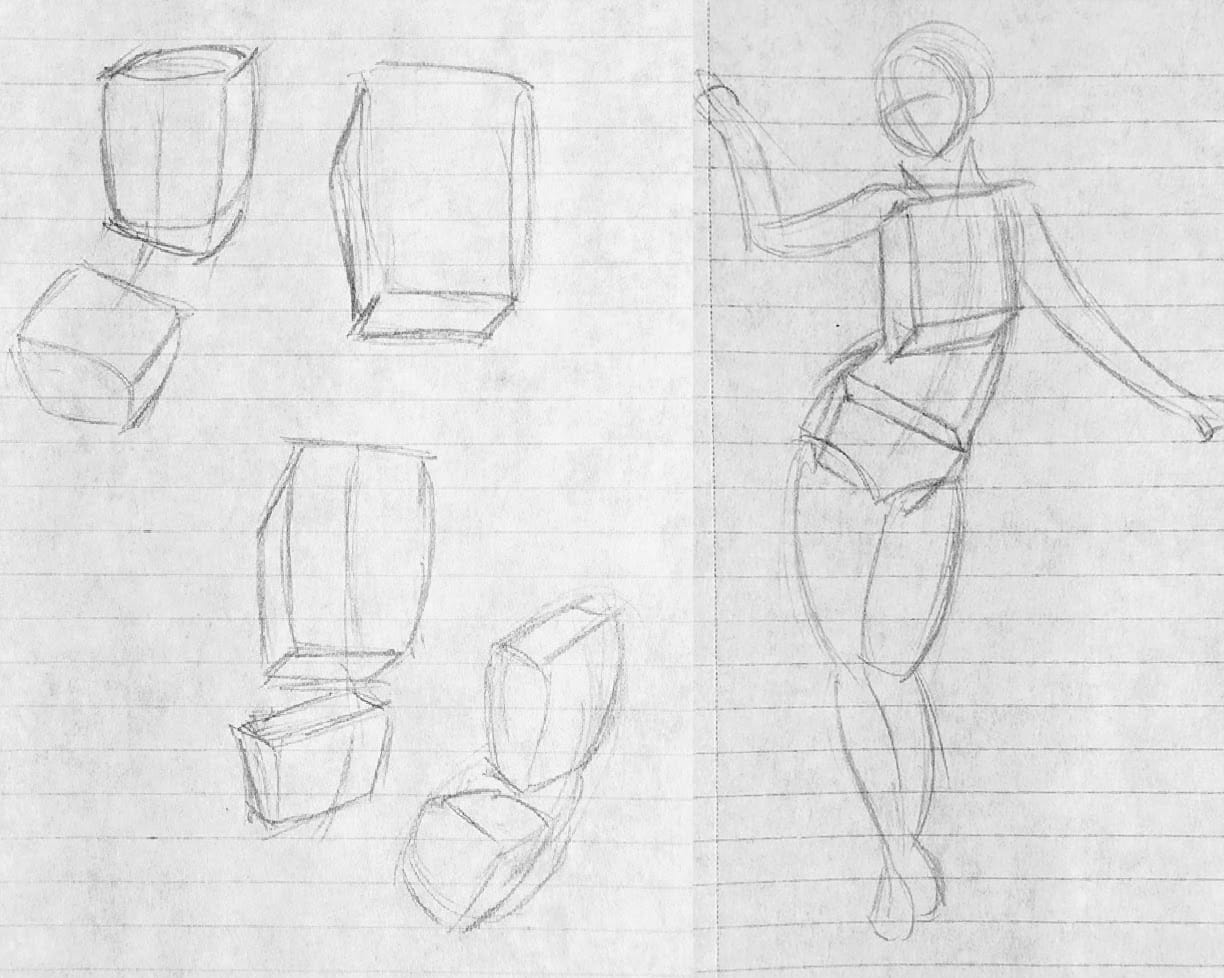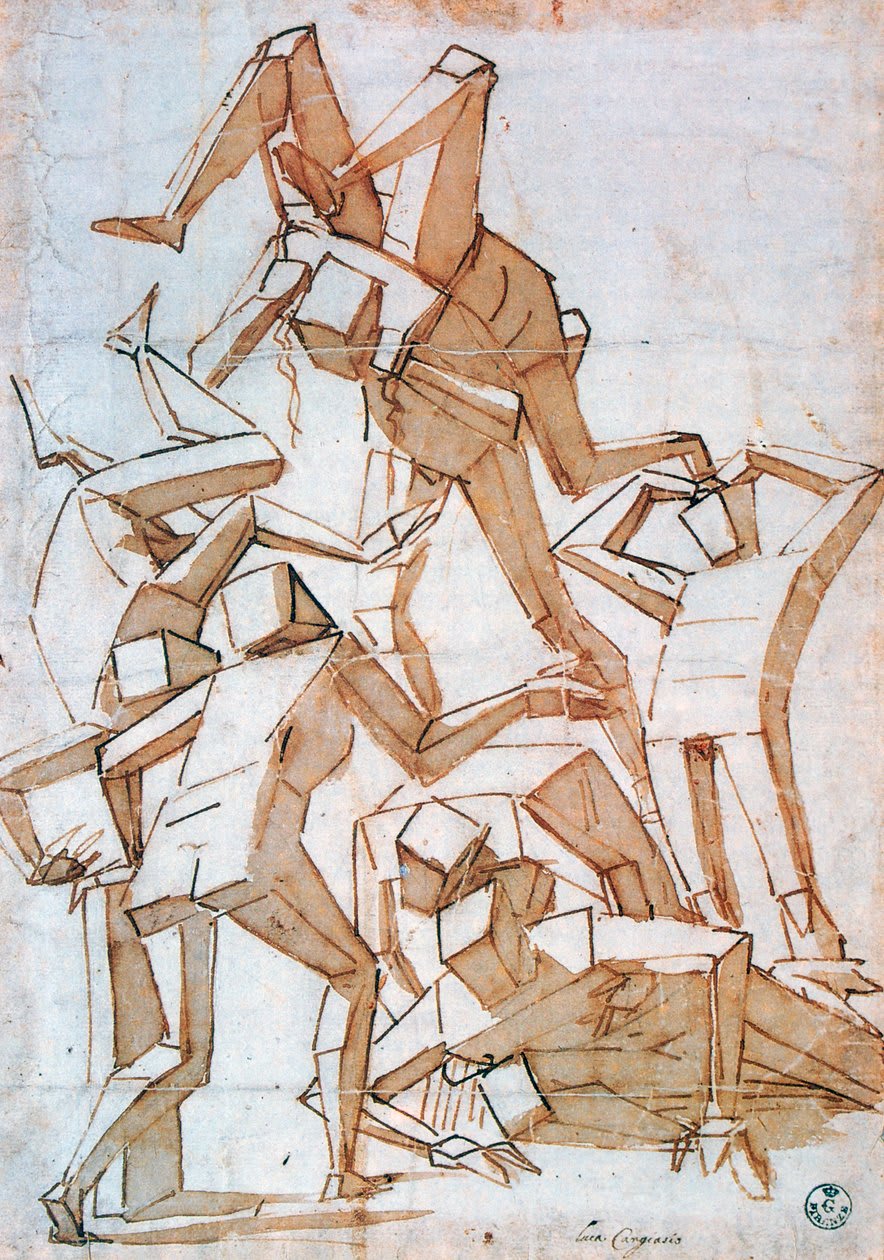Why Artists Study Anatomy
I’ve been interested in drawing ever since I was a little kid. I like drawing people. I practiced a lot by looking at a cool picture of a character I like, and copying it as closely as I can.
The better I got at copying, the better my work became. I got some great results this way. I even advanced to the level where I could take photos of real-life people, then painstakingly copying it to produce a portrait. I was pleased by and proud of many of my works. Many agreed that I was “such a good artist, wow!”
Here’s one piece I was particularly proud of; my sketch on the left, the reference on the right.
In middle school, I took on a new challenge: I wanted to draw commissions. People would give me a character design, sometimes with a few reference images, and I would draw their characters. This was really hard for some reason…
I had no images to copy directly from. My results were inconsistent. I spend a lot of my time tweaking things like moving around the eyes, redrawing the nose, etc. After a bunch of commissions, I got reasonably decent at drawing a character at the ¾ angle, the most common one for portraiture. I did hundreds of commissions, almost all of them at that angle. Soon, I felt uncomfortable drawing faces at any other angle.
Some examples of the stuff I drew. Some of them look kinda strangely similar, hmm...
I stopped doing art for a while because college was busy. When I started again, I took an anatomy class. I learned a lot of great things. But the biggest lesson I learned was that I’ve been approaching drawing all wrong. The biggest thing I had missed was that I had to understand the process that generates the image.
The art an artist draws is a projection of the 3D object onto a 2D surface. By practicing by only copying from 2D images without studying the 3D structures that generated them, I treated my reference images as being generated by some black box, and ignored the underlying gears and structures.
For example, the shape of an eye is determined by the 3D structures of the eyeball projected into 2D. I never learned what an eye looks like in 3D, so I didn’t know how to draw it from an angle different from the 2D references I’ve seen. It turns out, the eye isn’t a flat almond-shape like it seems in a picture. It’s a sphere inset into the skull, wrapped from the top and bottom by flaps of skin. No wonder I hit a wall when I tried to draw an eye from the side. I had never seen the sphere or practiced drawing it as a sphere. I probably tried to draw it as a slightly squished almond, then wondered why it looked wrong.
Another example: the lines describing a body in a drawing are dictated by the underlying bone and muscle structures. I had never studied these before. In the anatomy class, we looked at body parts in 3D. We reduced complex shapes (like a human torso) into simpler geometric shapes (boxes and spheres) which are easier to mentally rotate in space. Then we constructed lines of the torso using these basic shapes.
Some of my sketches of the torso.
Similarly, I learned to draw a head by starting with a sphere and a box. I then used these shapes to produce guiding lines, which then dictated where the surface features (eyes, nose, mouth) had to be located. If I wanted to draw the head from a different angle, I started with a sphere and box angled differently, which then produced different guiding lines. There was no more “guessing” where the eyes should go.
This is the reason artists draw from live models and study anatomy. The 3D shapes of the underlying structures generate the simple-seeming lines on a drawing. Drawing well requires opening the blackbox and looking at the internal gears of human anatomy.



I like that this post addresses a topic that is underrepresented on Less Wrong and does so in a concise technical manner approachable to non-specialists. It makes accurate claims. The author understands how drawing (and drawing pedagogy) works.